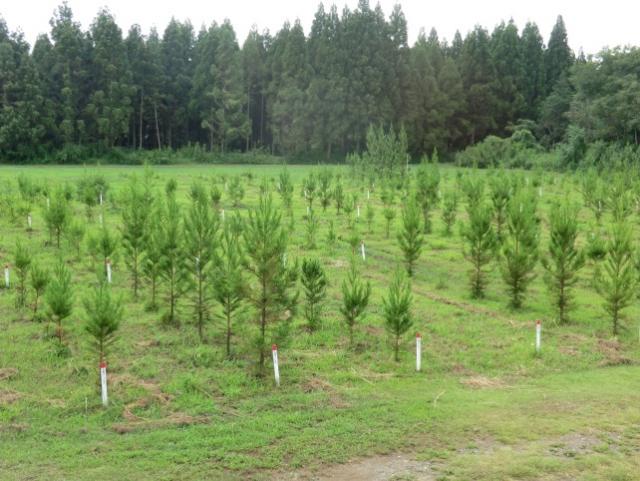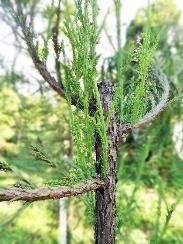Home > About us
Update:March 27, 2018
Main content starts here.
About us
The activities of the Kyushu Regional Breeding Office
Trees planted in a forest require many years for growth under severe, natural conditions. To create an ecologically diverse forest, it is important to select quality seeds and seedlings that are genetically superior or adapted to survive in that environment.
To develop and conserve superior seeds and seedlings, the Kyushu Regional Breeding Office, Forest Tree Breeding Center, Forestry and Forest Products Research Institute (affiliated with the National Research and Development Agency) is engaged in the following activities in the Kyushu Breeding Region:
- Developing superior varieties for growth, wood quality and resistance against damages;
- Extension of superior varieties;
- Collection, conservation, and evaluation of tree genetic resources.
Breeding zones
In Japan, the climate and distribution of tree species vary by location. To implement forest tree breeding reflecting the unique characteristics of trees in different geographical regions, there are five breeding zones in Japan. Based on a close working relationship with prefectural and other government related agencies, efforts are being made to develop new varieties suitable for different environments in various regions of Japan.

① Development of plus trees
【Development of superior varieties with excellent growth】
The project in the Kyushu Breeding Region, which was established in 1957 for the selection and breeding of superior trees, has selected 1,290 plus tree individuals including Japanese cedar and cypress to date based on superior growth and other characteristics. To verify that these trees possess the desired genetic characteristics, approximately 345 geographic areas (total: approximately 428 ha) have been established as “progeny test sites”.
Number of plus trees selected in the Kyushu Breeding Region
| Cedar (Cyptomeria Japonica) | Cypress (Chamaec-yparis obtusa) | Red Pine (Pinus densiflora) | Black Pine (Pinus thunbergii) | Ryukyu Pine (Pinus luchuensis) | Other spp. | Total |
|---|---|---|---|---|---|---|
| 633 | 188 | 113 | 214 | 95 | 47 | 1,290 |
Progeny test sites are periodically assessed for the growth, curvature, quality of wood and other characteristics and the analytic results are published in an “characteristics table of plus trees”.
<Selection of the next generation>
Following artificial crossing between superior varieties of plus trees and evaluating the varieties, cutting seedlings from the selected varieties are evaluated (clone validation). Furthermore, there is a process, based on superior growth characteristics, in determining the second generation.
As of the end of 2016, 156 varieties of cedar and 98 varieties of cypress have been designated as the second generation plus tree “Elite Tree”.

【Less-pollen Japanese cedar and cypress varieties】
The allergy associated with pollen of Japanese cedar and cypress has become an increasingly important socio-medical issue in Japan. In collaboration with 7 prefectures, the Kyushu RBO has developed 39 cedar varieties (total: 156 varieties) and 17 cypress varieties (total: 55 varieties) that produce less pollen.
<Development of pollen free cedar varieties suitable for the Kyushu Breeding Region>
The Kyushu RBO conducts artificial crossing between plus trees native to Kyusyu area and a pollen free variety developed in Forest Tree Breeding Center to create pollen free cedar variety with superior growth and lumber quality suitable for the Kyushu area.
Note: As the non-pollen producing gene is recessive, the non-pollen cedar tree represents the F2 (second filial generation) produced by cross-breeding of F1 (first filial generation) cedar trees.
【Pine wilt nematode-resistant varieties】
Forest damage due to the pine wilt nematode is spreading throughout Japan expect Hokkaido. The Kyushu RBO has developed 120 resistant varieties (total: 429 varieties) that are resistant to the disease.
In 2016, the Kyushu RBO developed two second generation varieties through controlled crossing experiments between resistant varieties considered to have superior resistance. More resistant varieties will be developed by the Kyushu RBO in the medium-term.
<Promoting the use of tolerant varieties against pine wilt nematode>
In creating a second generation of more tolerant varieties against pine wilt nematode, an evaluation of flowering characteristics as well as the tolerance of the seedling will be undertaken, followed by public release of the results.
Furthermore, in order to maximize the pine wilt tolerance of the seedlings produced in the seed orchard, consideration is given to selection of trees within the seed orchard considering the flower season as well as optimal placement of trees.
② Extension of superior varieties
Superior varieties developed by the Office can be propagated from cuttings and grafts*. Seedlings and scions will be made available to prefectures or prefecture-authorized propagation companies (authorization limited to a “Specified Mother Tree”).
What is a “Specified Mother Tree”?
This labeling is applicable to those trees that have been designated by the Minister of Agriculture, Forestry and Fisheries based on the criteria of superior growth and male flower production reduced by one half or lower. This became law with the 2013 amendment of the Act on Special Measures concerning Advancement of Implementation of Forest Thinning, etc.
To promote extension of the specified mother tree, private enterprises (authorized by the prefecture to propagate Specified Mother Trees) can be designated as producers of seedlings from foundation stock that are distributed from the Forest Tree Breeding Center.
As of the end of 2016, the Kyushu Breeding Region had 31 cedar trees and 1 cypress tree designated as “Specified Mother Trees”
At the Kyushu Regional Breeding Office, Elite Trees that are candidates for “Specified Mother Trees” are evaluated for male flowering production, etc. Concurrently, preparation is undertaken for filing an application in cooperation with each prefecture.
Strengthening the supply system for “Specified Mother Trees”
To increase the supply of seedlings, the Kyushu Regional Breeding Office has created seed orchards and scion gardens where “Specified Mother Trees” and Elite Trees that are candidates for such designation are planted.
To increase earlier scion harvesting and seedling production efficiency, studies on earlier fusion and growth of scion/rootstock and increase in tree cutting rooting efficiency have been started.
|
|
|
Dissemination of the variety management system
To avoid mix-ups during production of seedlings from “Specified Mother Trees”, every step in the process of collecting of scions, cuttings and nursery transplanting is labeled. In parallel, DNA analysis is introduced to confirm identity of the variety prior to distribution of seedling.
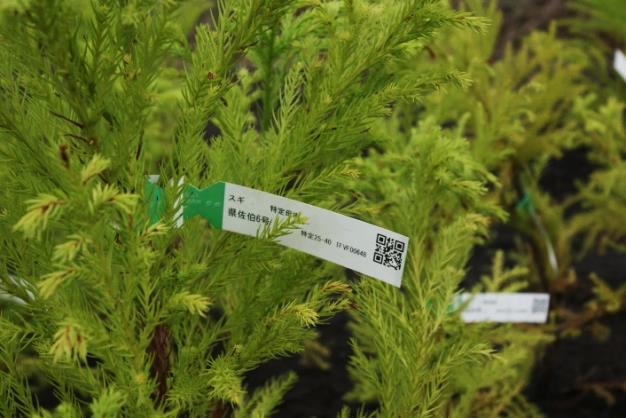
Distributed seedlings labeled with the name of the variety
<The flow from new tree variety development to planting in a forest>
 Kyushu RBO |  Prefectures Private propagation |  Seeds and seedling producers Private propagation |  Forestry cooperatives Silviculture enterprise |
③ Collection, conservation and evaluation of tree genetic resources
【Forest tree gene bank program】
Forest tree genetic resources have to be preserved and handed to subsequent generations.
In addition to the increased concerns about biodiversity conservation in forests, the expectations regarding forest genetic resources is expanding together with advances in science and technology.
【Conservation of endangered tree species】
<Collection and conservation of the endangered species Pinus armandii under the category of “Endangered” on the red list>
Pinus armandii, which grows naturally on Yakushima Island and Island Jam, has been designated a Category B endangered species by the Ministry of the Environment; however, there has been a significant decline of trees in their prime, as well as, old trees in this natural habitat are located in an area where there are no young individuals of the next generation willing to assume responsibility.
- For this reason, an effort was launched to propagate trees. As of 2012, approximately 600 seedlings of Pinus armandii have been planted in a natural habitat (Kagoshima prefecture, Kumage-gun, Yakushima town).
【Emergency call for forest tree gene banks】
When natural treasures such as giant trees and famous trees are weakened and propagation of clones of the trees is requested to the Office, cuttings and grafting are used to increase the number of trees and seedlings to return the clone seedlings to the owners or natural habitat.
The clone seedlings are allowed to mature in the designated area and used for research material.
Return of “Takachiho-zinzya no Sugi(Cryptomeria japonica)”
When cracks and fissures were observed in the trunk of the 800-year-old cedar tree at the Takachiho Shrine (Takachiho-cho, Nishiusuki-gun, Miyazaki prefecture), there was concern about the tree falling. In response, the shrine requested that propagation efforts be initiated.
In March 2016, the clone seedlings grown at the office was returned to the Shrinet with seedlings grown at the Miyazaki Prefectural Forest Technology Center and the timber industry in Kumamoto Prefecture.
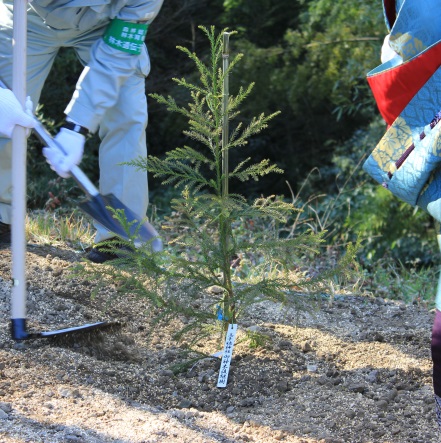 A clone seedling returned | 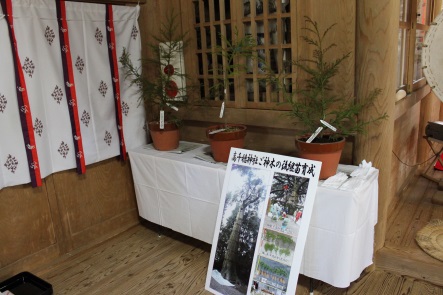 Clone seedlings returned | 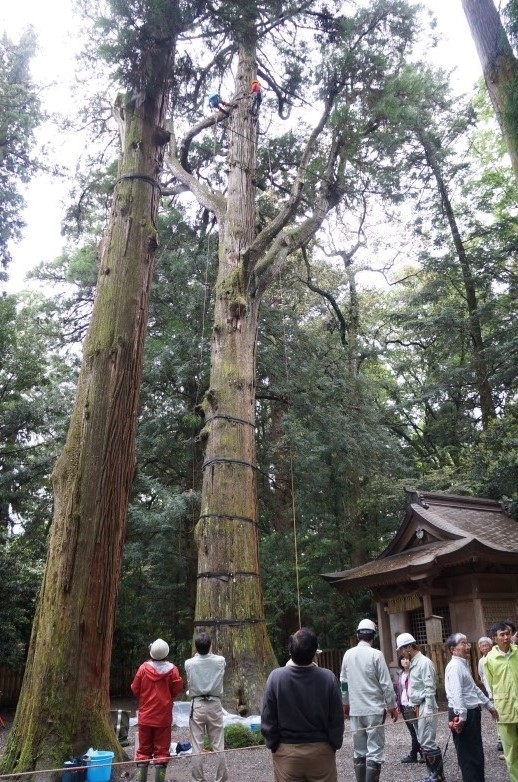 Collection of scions |
Copyright © Forest Research and Management Organization. All rights reserved.

